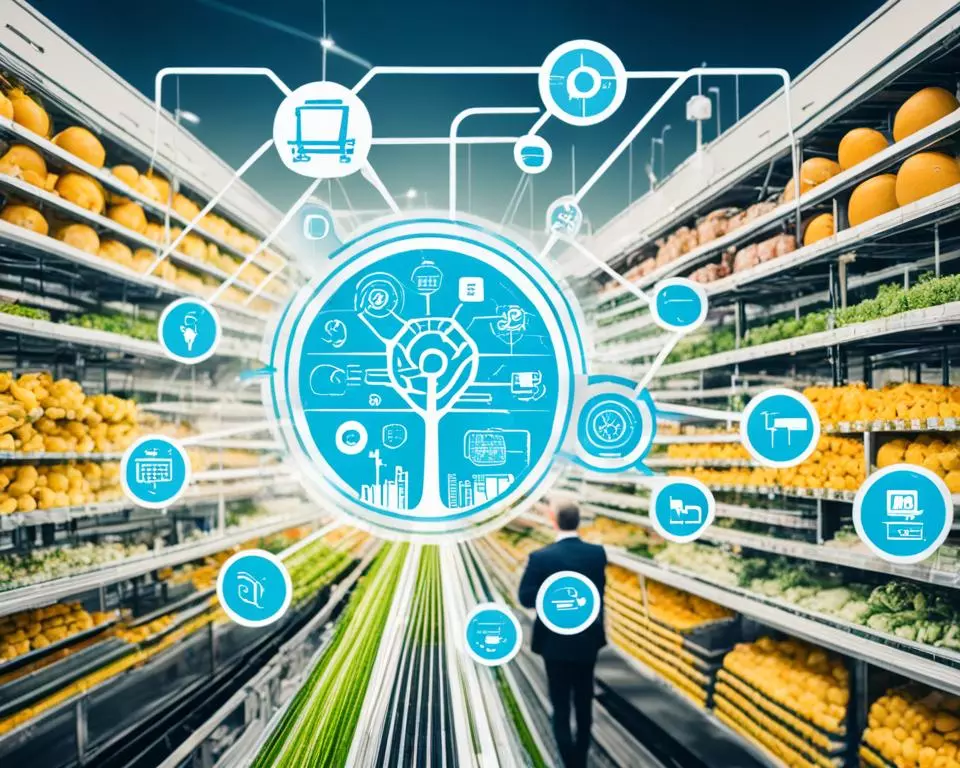Adverts
The implementation of Internet of Things (IoT) can bring many benefits for companies, but it can also be a challenge. It's important to know the requirements and best practices for a successful deployment. According to data from LOGICALIS IoT-snapshot-latam, 39% of Latin American companies consider the IoT very important for your business in the next 3 to 5 years. However, 45% of Brazilian companies have not yet adopted an IoT solution, mainly due to a lack of knowledge and guidance on how to conduct the adoption process within the company.
Adverts
To the start your IoT deployment journey, you can benefit from a simplified guide, which will help you understand the fundamental concepts, essential steps, and best practices for successfully implementing this transformative technology. This guide will provide a comprehensive overview of IoT, present examples of its use in different industries, and guide you through every phase of the process, from availability assessment until the lifecycle management of the IoT solution.
Main points covered in this simplified guide:
- Understanding IoT and how it works
- Main IoT concepts and their application in companies
- Essential steps to successfully implement an IoT solution
- Sectors that are already benefiting from IoT
- You benefits It is challenges the implementation of IoT
Follow this guide and start your IoT deployment journey assertively and strategically. Get ready to boost your digital strategy and gain a competitive advantage in the constantly evolving market.
What is IoT and how does it work?
A Internet of Things (IoT) is a network of connected devices who collect and exchange real world data via the internet or other networks. These IoT devices are capable of communicating with each other and with information systems, allowing the collection and information exchange in an automated way.
Adverts
IoT revolutionizes the way we interact with the world around us. It enables the connection of a wide variety of devices, from household appliances and vehicles to industrial equipment and temperature monitoring sensors. health. All of these devices are connected and collect relevant information for analysis and decision making.
A data collect It is one of the main characteristics of IoT. Those connected devices they capture real-world information, such as temperature, location, humidity level, movement, among others, and send it to a processing center. This data is then analyzed and transformed into useful information for companies, governments and end users.
A practical example of IoT application is the remote monitoring of cardiac patients. Sensors are implanted in patients to collect data on heart rate, blood pressure and other parameters. This information is transmitted over the internet to a monitoring system, which alerts doctors in case of abnormalities.
How does IoT work?
IoT works through connected devices, communication networks and data processing platforms. IoT devices are equipped with sensors, actuators and communication systems that allow interaction with other devices and the transfer of information.
Communication between IoT devices can occur through wireless networks such as Wi-Fi, Bluetooth, Zigbee, or cellular networks. These networks allow the exchange of data between devices and the transmission of this information to a centralized platform.
Once data is collected by IoT devices, it is sent to a data processing platform where it is stored and processed. Here, data analysis algorithms are applied to transform this information into valuable insights.
Analysis of IoT data allows you to identify patterns, trends and anomalies, providing information to optimize processes, predict failures, improve energy efficiency, improve people's quality of life and make more informed decisions.
IoT has the potential to transform several sectors, including health, transport, agriculture, industry and smart cities. Connected devices and data collect allow the development of innovative solutions and the creation of a more intelligent and efficient environment.
In the next section, we will explore the main concepts of IoT and how they drive the applications of this technology. Continue reading to discover more about the world of Internet of Things.
Main IoT concepts
The main concepts of IoT are fundamental to understanding how this revolutionary technology works and how it can boost business. Here are three key concepts you need to know:
Focus on real-world data
IoT is based on the collection and exchange of real world data. Connected devices like sensors gather information about the physical conditions of the environment, such as temperature, humidity, movement, and more. This data is collected continuously and can be used to gain valuable insights into what is happening in real time.
Immediacy in operation
IoT allows companies to act immediately based on the data collected. With real-time access to information, it is possible to make faster and more accurate decisions. For example, sensors in a factory can monitor a machine's performance and immediately alert if there is a failure, allowing maintenance staff to act promptly to avoid downtime.
Resulting data
The data collected by IoT is valuable not only at the time it is produced, but also as a basis for future analysis. Those resulting data they can be used to identify patterns, make predictions and even train artificial intelligence systems. When using the resulting data, companies can make informed decisions and drive significant improvements in their processes and operations.
IoT encompasses a wide variety of devices, networks and computing resources. It is essential to have an adequate architecture to integrate all these parts into the company's existing IT system, ensuring efficiency and maximum use of data generated by IoT.
The next section of this article will discuss the essential steps for implementing IoT, providing a practical guide for you start your journey in this innovative field.
Essential steps for implementing IoT
To successfully implement an IoT solution, it is important to follow some essential steps. Below are the steps you should consider when start implementing IoT in your company:
- Availability assessment: Assess the availability of IoT in your company, taking into account the technical capabilities and IoT vision. Understanding the current level of implementation readiness will help you set realistic goals and identify areas that need improvement.
- IoT Strategy: Develop a clear strategy for implementing IoT. Identify the business processes in which the IoT solution can be applied to obtain the best results. This involves identifying opportunities for automation, optimization and improving operational efficiency.
- Security Assessment: Guarantee the security assessment in all aspects of your IoT project. This includes protecting collected data, preventing unauthorized access to devices, and implementing security measures at every step of the process.
- Connectivity Choice: Decide the best connectivity option for your IoT solution. Consider the communication needs between devices and systems, the availability of suitable networks, and the scalability of the chosen connectivity options.
- Choice of devices: Carefully select the IoT devices that will be used in your solution. Consider factors such as features, compatibility with existing infrastructure, ease of use and ability to integrate with other systems.
- Lifecycle Management: Create a plan lifecycle management for your IoT solution. This includes regular device maintenance, firmware and software updates, replacing obsolete equipment, and continually improving the solution to meet evolving needs.
“Successful implementation of IoT requires a structured approach and careful consideration of various technical and strategic aspects.”
Implementing IoT in your company can bring numerous benefits, from improvements in operational efficiency to in-depth insights into your business. However, it is essential to follow these essential steps to ensure successful implementation and ensure that you maximize the results obtained with IoT.
Sectors that already apply IoT
The Internet of Things (IoT) is transforming different sectors, driving innovation and bringing significant benefits to companies. Below are some examples of sectors that are already applying IoT and taking advantage of all the opportunities this technology offers:
Agribusiness
At the agribusiness, IoT is revolutionizing the way agriculture is carried out. Smart sensors are used to optimize irrigation, ensuring that crops receive the ideal amount of water. Furthermore, the sensors constantly monitor the status of crops, providing precise information about soil moisture, nutrients, the presence of pests and other factors essential to the success of agriculture. This way, farmers can make more assertive decisions and reduce production costs.
Health
A health is another sector that largely benefits from IoT. Connected devices monitor patients in real time, collecting vital data and transmitting this information to doctors and healthcare professionals. This allows for more accurate and continuous monitoring, enabling faster diagnosis and more effective treatment. Furthermore, IoT facilitates telemedicine and telecare, allowing patients to receive quality medical care even from a distance.
Retail
IoT is revolutionizing the customer experience in the retail. Through device connectivity, stores can offer personalized and contextually relevant service. Sensors and beacons are used to track customers' locations within stores, providing personalized offers and recommendations. Furthermore, IoT allows for the automation of tasks, such as the automatic replenishment of products on shelves and the optimization of logistics operations, ensuring better efficiency and experience for customers.
Education
In the area of education, IoT is revolutionizing teaching and learning methods. Connected devices, such as tablets and interactive whiteboards, enable the creation of more interactive and personalized learning environments. The use of IoT in education allows students to have access to digital resources and information in real time, stimulating their engagement and making the learning process more dynamic. Furthermore, IoT also allows the creation of smart networks within institutions, facilitating management and communication between students, teachers and administration.
These are just a few examples of how IoT is transforming different sectors, driving innovation and bringing significant benefits to companies. IoT offers endless possibilities and is only at the beginning of its transformation journey. It is essential that companies are prepared to adopt IoT and explore all the opportunities that this revolutionary technology offers.

| Sector | Benefits |
|---|---|
| Agribusiness | Optimization of irrigation, monitoring of plantations, reduction of production costs |
| Health | Remote patient monitoring, faster diagnosis, more effective treatment |
| Retail | Personalized customer experience, operations automation, logistics optimization |
| Education | Interactive learning environments, access to digital resources, efficient academic management |
Conclusion
Deploying IoT offers numerous benefits to businesses, such as greater operational efficiency and improved business insights. However, it also presents challenges, such as a lack of knowledge and adequate guidance. To make the most of this revolutionary technology, it is essential to follow the essential steps for successful IoT implementation.
It is essential to be up to date on future IoT trends and be prepared to adapt the strategy according to market changes. With the correct implementation of IoT, companies can bring their digital strategy and drive business growth. By implementing an IoT solution, it is possible to achieve greater operational efficiency through process automation, resource optimization and better real-time monitoring.
Furthermore, IoT offers important benefits, such as access to valuable data and the possibility of making decisions based on precise insights. With the data collect from connected devices, companies can better understand their customers, identify opportunities for improvement and take more informed strategic actions. However, it is essential to deal with challenges potential, such as data security, interoperability and the complexity of integrating different systems.
Implementing IoT requires careful planning and collaboration between different areas of the company. By overcoming challenges and leveraging benefits, companies can boost their competitiveness and achieve significant results. IoT is transforming business in several sectors and it is essential to be prepared for this technological revolution.
